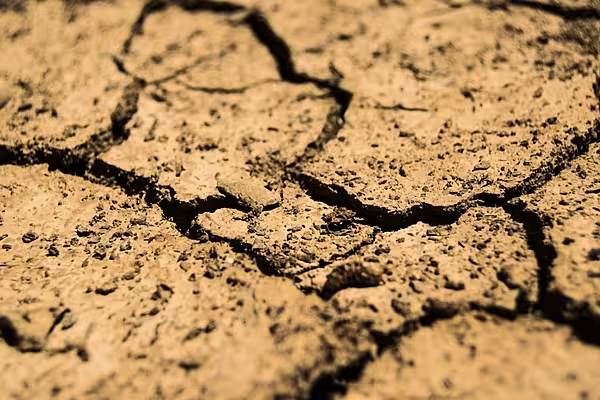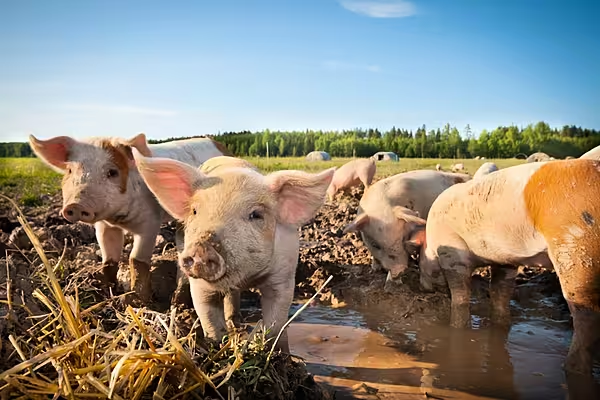As South Africa’s worst drought in more than a century persists, crops besides grains are under threat as irrigation reservoirs drain, and that could be “catastrophic” for an industry that exports $7.7 billion annually, a body that represents food producers and processors said.
“The drought has now become a huge problem into the irrigation areas because there has been no surface run-off,” said John Purchase, the chief executive officer of the Agricultural Business Chamber that’s also known as Agbiz. “Rivers and dams are running dry.”
South Africa’s rainfall last year was the lowest since records began in 1904, causing widespread damage to crops and livestock herds. The country, which is the continent’s largest corn producer, has become a net importer of the grain for first time since 2008. This helped push the food-price inflation rate to 11.6 percent in August, the highest in about five years and almost double the increase in prices for the average basket of goods.
Lack of rain and above-normal heat has persisted this year, and the nation’s weather service sees this continuing into 2017, hampering a recovery in production. Prices of white corn, used to make a staple food known as pap, peaked at a record 5,376 rand a metric ton in January and have declined 36 percent since then.
A third year of drought “would be pretty catastrophic,” Purchase said in an interview at Bloomberg’s Johannesburg office Thursday. “Everybody pays for this drought. The farmers take the biggest risk, but the agri-businesses are showing huge losses. The retailers... the consumer is paying 11 percent, 12 percent food inflation.”
Drought Cost
Farmers will need as much as 16.6 billion rand ($1.2 billion) in the year through March to subsidize feed purchases, provide grants and interest-rate support to aid commercial growers in financial distress and help operators pay workers, a study by the AGRI SA lobby group and others showed earlier this year. There are about 35,000 commercial farmers in the country.
The government has spent 268 million rand on drought relief from its Comprehensive Agricultural Support program. Provinces have made 173 million rand available to assist farmers with animal feed and stock and an additional 198 million rand to help smallholder farmers to continue with provision of livestock feed and watering facilities in year to March.
The chamber “would have liked to see more support for commercial farmers” from the government, Purchase said. About 350 producers face ruin because they aren’t able to access finance for inputs for the new planting season, which starts this month. The loss of their produce in the previous season meant they had nothing to borrow against, he said. Agbiz, whose members include banks and insurers, estimates the state guarantee needed to support these businesses would be about 1 billion rand, he said.
La Nina
There is a likelihood of a weak La Nina weather pattern, which typically brings higher rainfall to southern Africa, the weather service said Sept. 30. Earlier in the month, it said that the expected below-normal rainfall conditions are delaying a recovery from the El Nino-induced drought. However, above-normal rainfall and temperatures may come in the summer-season months of November, December and January, it said.
The town of Bethal in the Mpumalanga province will probably receive 2 millimeters (0.08 inch) of rain on Sunday and may get 2.9 millimeters on Oct. 16, according to the yr.no weather website. Botshabelo in the the Free State is forecast to get 2.9 millimeters tomorrow and the North West’s Brits will receive 2.2 millimeters on Sunday. The provinces are the biggest growing regions for corn, soybeans and sunflower seeds.
The scarcity of water has resulted in lower quotas for farmers who are part of irrigation schemes including Vaalharts, one of the world’s biggest, located in the Northern Cape province. The areas it supplies produce crops ranging from pecan nuts to potatoes. “I don’t know of an irrigation scheme where the quotas have not been cut,” Purchase said.
While production of grains, oilseeds and meat was affected by the first two years of the drought, output of vegetables and fruits will now be hurt, he said. South Africa is the world’s biggest citrus exporter after Spain.
“This drought is very serious -- we can’t underestimate the impact of this drought and we are still going to feel it for a while,” Purchase said.
News by Bloomberg, edited by ESM. To subscribe to ESM: The European Supermarket Magazine, click here.














